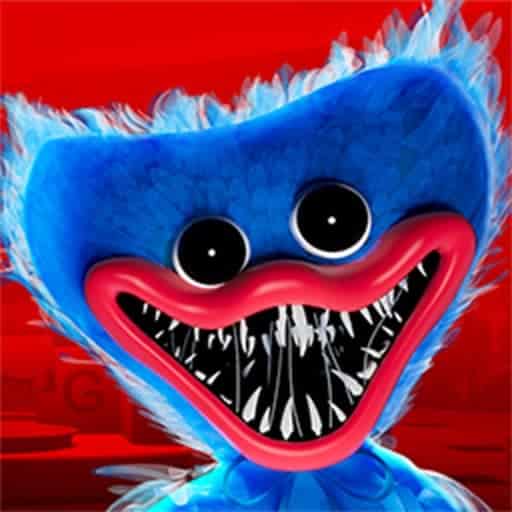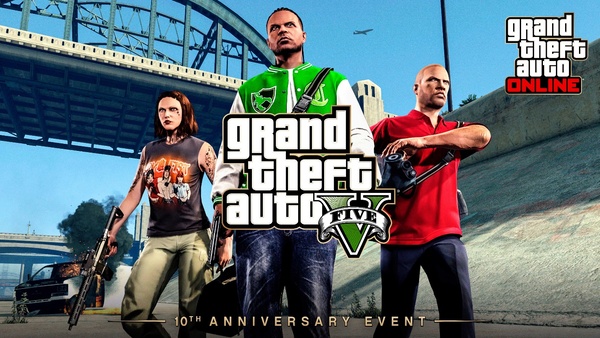Poppy Playtime: Redefining the Modern Horror Gaming Experience
In the ever-evolving landscape of horror gaming, Poppy Playtime has carved out a unique space with its blend of psychological tension, eerie storytelling, and immersive puzzle mechanics. Developed by MOB Games and first released in 2021, this indie horror title quickly became a cultural phenomenon, earning viral fame across platforms like YouTube, Twitch, and TikTok. Much like Among Us, Poppy Playtime exploded in popularity thanks to streamers and content creators, but it cemented its staying power through atmospheric depth and an evolving, narrative-driven world.
Rather than relying purely on blood, gore, and relentless chase scenes, Poppy Playtime leans into exploration, environmental storytelling, and suspense. Set within the decaying remnants of an abandoned toy factory, the game tasks players with solving puzzles, uncovering dark secrets, and surviving encounters with twisted creations. With its standout villain Huggy Wuggy, a terrifying amalgam of childlike innocence and nightmare fuel, Poppy Playtime delivers a fresh twist on horror gaming that continues to grow in depth and intensity with each chapter.
1. Origins of Poppy Playtime: MOB Games’ Vision for Horror Innovation
MOB Games, a small indie studio, set out to subvert horror gaming expectations. Rather than overwhelming players with non-stop threats or mindless jump scares, the developers focused on building a rich, suspense-filled environment where danger is implied and gradually revealed.
At the heart of this design philosophy is the idea that horror is most effective when it’s grounded in curiosity and unease. By weaving the gameplay around mystery, rather than violence, Poppy Playtime invites players to immerse themselves fully in its creepy world while staying constantly on edge.
The Setting: A Toy Factory Steeped in Shadows
The narrative unfolds in the once-celebrated Huggy Wuggy Toy Factory, now abandoned and overrun by a haunting presence. Players return to the factory as a former employee following a mysterious message. What begins as a simple investigation soon spirals into a fight for survival, as the seemingly lifeless facility reveals disturbing remnants of its past and its monstrous occupants.
2. Gameplay Mechanics: Blending Puzzle-Solving and Survival Horror
Poppy Playtime’s gameplay revolves around exploration, problem-solving, and survival mechanics. Unlike typical action-heavy horror games, it invites players to think critically, explore deeply, and interact cleverly with the environment.
The GrabPack: Innovative Puzzle Tool and Lifeline
One of the game’s standout features is the GrabPack—a device with extendable hands that players use to manipulate objects, complete electrical circuits, and access unreachable areas. This tool is central to both the puzzle-solving and horror elements, offering moments of interactivity that are essential to progress and survival.
The GrabPack becomes especially crucial during tense chase sequences or scripted encounters. Whether opening locked doors or activating hidden levers, it bridges the gap between the player and the sinister world around them.
Exploration and Story Immersion
Every corner of the factory holds potential secrets. Players are encouraged to thoroughly explore their surroundings, where old VHS tapes, scattered documents, and cryptic recordings reveal the sinister truth behind the toy factory. This form of environmental storytelling rewards curiosity and adds weight to every discovery, reinforcing the narrative without interrupting gameplay flow.
3. Redefining Horror: Subtle, Smart, and Psychological
Poppy Playtime distances itself from the overused tropes of cheap jump scares and replaces them with suspenseful pacing and psychological dread. The game’s horror lies not just in what you see—but what you suspect might be waiting.
Sound Design and Atmosphere
Silence, interrupted by distant machinery or echoing footsteps, becomes a character in itself. The game’s ambient soundscape cultivates constant tension, ensuring that players remain uneasy even in moments of stillness.
Huggy Wuggy: The Face of Terror
With his bright blue fur, oversized limbs, and disturbingly wide grin, Huggy Wuggy has become the franchise’s most iconic figure. Initially a benign mascot, Huggy transforms into a nightmarish pursuer—stalking players with unnerving stillness before erupting into motion.
His appearances are unpredictable, his movements swift, and his presence unnerving. Huggy Wuggy epitomizes Poppy Playtime’s horror style: subtle, slow-building fear followed by explosive moments of terror.
4. The GrabPack as a Game-Changer in Horror Mechanics
The GrabPack adds more than just puzzle-solving mechanics—it introduces a layer of strategy to encounters. Players must assess the environment, determine how best to manipulate it, and react under pressure when under threat.
Mechanical Innovation in Gameplay
By offering players the ability to interact dynamically with their surroundings, the GrabPack makes the environment itself feel alive. Players aren’t just observers—they’re participants in the factory’s mysteries, creating a deeper sense of immersion and control.
5. Community and Content Creators: Fueling Viral Success
From the outset, streamers and YouTubers played a huge role in Poppy Playtime’s explosion in popularity. Horror content thrives on reaction, and Poppy Playtime’s suspenseful setup was perfect for audience engagement.
The Role of Influencers
Gaming icons like Jacksepticeye, PewDiePie, and Markiplier showcased the game to millions. Their genuine reactions to jump scares and eerie moments turned Poppy Playtime into a global conversation.
Memes, Fan Theories, and Online Hype
As the game’s community grew, so did its meme culture and theory crafting. Huggy Wuggy and other characters were reimagined in fan art, cosplay, animations, and even songs. Online communities continue to thrive on dissecting the story, decoding Easter eggs, and speculating on future content.
6. Poppy Playtime Chapter Structure: Expanding the Story
The game is released in chapters, with each new segment expanding the narrative and introducing fresh mechanics, characters, and locations. This approach keeps players engaged and builds long-term anticipation.
Chapter One: The Introduction to Fear
In Chapter One, players first encounter Huggy Wuggy and uncover the initial clues about the factory’s twisted experiments. The gameplay introduces the basic mechanics and sets a terrifying tone.
Chapter Two and Beyond: New Threats, New Mysteries
Future chapters dive deeper into the origins of the toys and the dark science behind them. Players encounter new enemies like Mommy Long Legs, further expanding the factory’s horrific lore and introducing more complex puzzles and dangers.
7. The Franchise’s Future: Beyond Gaming
Poppy Playtime’s creators have signaled ambitious plans beyond the game itself. With merchandise, animated shorts, and possible TV or movie adaptations, the brand is poised to become a broader entertainment franchise.
Merchandising and Licensing
Toys, apparel, and collectibles featuring characters like Huggy Wuggy have already hit the market. The franchise’s unique visual identity makes it instantly recognizable and highly marketable.
Potential TV or Film Adaptations
Given the success of horror-based film adaptations like Five Nights at Freddy’s, it’s easy to see how Poppy Playtime could transition into a cinematic universe. Its lore-rich world and unique villains are ripe for serialized storytelling.
8. Psychological Themes and Moral Undertones
Beneath the surface scares, Poppy Playtime touches on themes of corporate greed, scientific overreach, and childhood innocence corrupted. These motifs elevate the experience beyond simple horror, offering players something deeper to think about.
Dark Origins of Joy
The factory’s toys were created with disturbing intentions, turning something joyful into something dangerous. The contrast between childlike whimsy and adult horror is one of the game’s most effective devices.
Commentary on Ethics in Science and Business
The backstory hints at unethical experiments and lost lives—all in the name of profit. It’s a subtle critique of industries that place innovation above human cost.
9. Cultural Influence: From Indie Game to Horror Icon
Within a short time, Poppy Playtime has become a cultural landmark in horror gaming. Its instantly recognizable imagery and character designs have made it a staple in fan communities.
The Rise of Huggy Wuggy as a Mascot
Like Slenderman or Freddy Fazbear before him, Huggy Wuggy has become a horror mascot. He appears not only in gameplay but across countless fan projects and discussions.
Inspiring the Next Generation of Indie Horror
Poppy Playtime’s success proves that innovation, storytelling, and atmosphere can outweigh budgets. It has inspired countless new developers to think creatively about the horror genre.
10. Why Poppy Playtime Represents the Evolution of Horror Games
Poppy Playtime isn't just a game—it's a sign of how horror is changing. By emphasizing atmosphere, storytelling, and interactive gameplay, it appeals to modern players who crave more than just gore and screams.
The New Wave of Smart Horror
Just as titles like Amnesia and Outlast shifted horror away from violence toward fear-based mechanics, Poppy Playtime takes that evolution even further—blending narrative and gameplay into one cohesive, terrifying journey.
Conclusion: The Lasting Impact of Poppy Playtime
Poppy Playtime has reshaped the expectations of what a horror game can be. With its eerie setting, clever mechanics, iconic villain, and evolving story, it continues to captivate players around the world. More than just a scary game, it’s a deeply immersive experience that challenges players intellectually and emotionally.
As the franchise grows—through new chapters, expanded media, and a devoted fanbase—Poppy Playtime is poised to remain at the forefront of modern horror gaming. It’s a masterclass in indie game design and a chilling reminder that sometimes, the most terrifying things come wrapped in fur, smiles, and songs from your childhood.

 Roblox: Grow A Garden
Grow A Garden in Roblox isn’t just a farming game—it’s a peaceful, deeply engaging, and creatively rewarding experience that captures the heart of what makes sandbox games magical.
Read full review
Roblox: Grow A Garden
Grow A Garden in Roblox isn’t just a farming game—it’s a peaceful, deeply engaging, and creatively rewarding experience that captures the heart of what makes sandbox games magical.
Read full review
 Grand Theft Auto VI
GTA VI is the most ambitious open-world game in history. It brings cutting-edge technology, socially conscious satire, and bold narrative decisions together to create a truly next-generation experience.
Read full review
Grand Theft Auto VI
GTA VI is the most ambitious open-world game in history. It brings cutting-edge technology, socially conscious satire, and bold narrative decisions together to create a truly next-generation experience.
Read full review
 Stick War: Infinity Duel
Stick War: Infinity Duel blends ragdoll physics, fast-paced duels, and addictive combat into one of the most fun local multiplayer stickman games.
Read full review
Stick War: Infinity Duel
Stick War: Infinity Duel blends ragdoll physics, fast-paced duels, and addictive combat into one of the most fun local multiplayer stickman games.
Read full review
 Rematch
Rematches bring drama, redemption, and evolution to competitive gaming — a second chance that often defines champions and legends.
Read full review
Rematch
Rematches bring drama, redemption, and evolution to competitive gaming — a second chance that often defines champions and legends.
Read full review
 NARAKA: BLADEPOINT
NARAKA: BLADEPOINT blends martial arts with battle royale intensity, offering fast-paced action, hero tactics, and artistic combat brilliance.
Read full review
NARAKA: BLADEPOINT
NARAKA: BLADEPOINT blends martial arts with battle royale intensity, offering fast-paced action, hero tactics, and artistic combat brilliance.
Read full review
 Dota 2
Dota 2 remains the gold standard for competitive MOBAs — a deep, strategic, and ever-evolving game that rewards mastery and teamwork.
Read full review
Dota 2
Dota 2 remains the gold standard for competitive MOBAs — a deep, strategic, and ever-evolving game that rewards mastery and teamwork.
Read full review

























